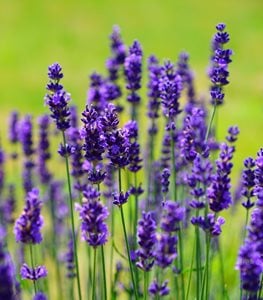If you’re dreaming of a garden that smells heavenly, looks stunning, and requires minimal upkeep, then lavender is your perfect plant. With its silvery foliage, purple blooms, and calming fragrance, lavender adds timeless charm to any garden space. In this guide — “Try This Amazing How to Plant Lavender Outdoors Idea!” — you’ll learn exactly how to grow healthy, vibrant lavender plants right in your own backyard.Whether you live in the United States, United Kingdom, or Canada, this article will walk you through everything from choosing the right variety to planting, watering, and maintaining your outdoor lavender. Let’s get growing! 🌿🌸 Introduction: Why Lavender Is the Perfect Outdoor PlantLavender isn’t just beautiful — it’s practical, too! Known for its fragrance, resilience, and pollinator appeal, lavender enhances any outdoor space. Bees and butterflies love it, it repels mosquitoes naturally, and its aroma promotes relaxation.A well-planted lavender bed or border can:Bring a Mediterranean feel to your garden.Thrive in dry, sunny conditions.Offer a low-maintenance, drought-tolerant garden solution.Provide cut flowers and essential oils for months.So, if you’ve ever wanted your garden to look like a peaceful French countryside scene, it’s time to try this amazing how to plant lavender outdoors idea!🌿 Step 1: Choose the Right Lavender VarietyNot all lavender is the same! Choose the variety that best suits your local climate and garden space.Popular Lavender Varieties:English Lavender (Lavandula angustifolia): Cold-tolerant, ideal for cooler climates like the northern U.S., Canada, and the U.K.French Lavender (Lavandula dentata): Grows well in warm, dry regions; recognizable by its serrated leaves.Spanish Lavender (Lavandula stoechas): Distinctive “bunny ear” blooms; thrives in hot, sunny areas.Lavandin (Lavandula x intermedia): A hybrid with long stems and strong fragrance — perfect for bouquets and oils.💜 Pro Tip: Check your USDA growing zone (or U.K. hardiness zone). Most lavenders prefer zones 5–9, depending on the type.☀️ Step 2: Pick the Perfect SpotLavender loves full sun — at least 6–8 hours of sunlight daily. It also needs well-draining soil, as standing water can quickly rot its roots.Best Locations:Along garden borders or walkways for fragrance and color.In rock gardens or raised beds for improved drainage.Near patios or entryways where the scent can be enjoyed.💧 Avoid: Shady areas or spots with compacted, soggy soil — lavender prefers it dry and airy!🌱 Step 3: Prepare the SoilHealthy soil equals healthy lavender.Soil Requirements:Light, sandy, or loamy soil.pH between 6.5 and 7.5 (slightly alkaline).Great drainage — lavender hates soggy conditions.How to Improve Your Soil:Mix in gravel, sand, or perlite to boost drainage.Add a handful of garden lime if your soil is too acidic.Avoid heavy clay unless you plant in raised beds or pots.🌿 Tip: A simple drainage test — dig a small hole, fill it with water. If it drains within 30 minutes, you’re good to go!🌼 Step 4: Planting Your LavenderNow for the fun part — planting your lavender outdoors!When to Plant:Spring is the best time, after the last frost, so roots can establish before winter.In warm climates, you can also plant in early fall.How to Plant Lavender:Dig a hole twice as wide as the root ball, but not deeper.Gently remove the plant from its pot and loosen the roots.Place the lavender in the hole and fill with well-draining soil.Space plants 12–24 inches apart (larger varieties up to 3 feet).Water lightly to settle the soil.💜 Pro Tip: Add a layer of small gravel or white stones around the base to reflect sunlight and prevent weeds.💧 Step 5: Watering and FeedingLavender thrives on neglect — overwatering is the biggest mistake gardeners make.Watering Schedule:Water newly planted lavender once or twice a week until established.After that, water only when the top inch of soil feels dry.In humid or rainy climates, reduce watering even more.Feeding:Lavender doesn’t need rich soil — too much fertilizer encourages leaves, not blooms.Use a light organic fertilizer once in spring.Or skip feeding altogether if your soil is moderately fertile.🌸 Rule of Thumb: Dry and lean soil equals more fragrant blooms!✂️ Step 6: Pruning for Healthy GrowthRegular pruning keeps your lavender compact, bushy, and full of blooms.When to Prune:Spring: Trim lightly to remove winter damage.Late Summer (after blooming): Cut back ⅓ of the plant to encourage new growth.How to Prune:Use clean shears and avoid cutting into old woody stems.Shape the plant into a gentle dome for good air circulation.🌿 Bonus Tip: Pruning helps lavender live longer — some plants can thrive for 10–15 years with proper care!🌸 Step 7: Mulching and Winter ProtectionLavender prefers drier conditions, so be careful with mulch.Use gravel, crushed shells, or light pebbles instead of organic mulch.In cold regions, protect roots by covering the base with straw or burlap during harsh winters.💜 In snowy areas (like Canada or the northern U.S.): Plant in raised beds or pots that can be moved to a sheltered spot.🦋 Step 8: Enjoy and HarvestOnce your lavender is blooming, you can start enjoying its beauty and fragrance.Harvesting Tips:Cut stems just as buds start to open for maximum fragrance.Hang bundles upside-down in a cool, dry place to dry.Use dried lavender for:Homemade sachetsHerbal tea blendsBath saltsEssential oil extraction💐 Bonus: Bees and butterflies will thank you — lavender is a top pollinator-friendly plant!🌾 Common Lavender Problems (and Fixes)Problem Cause SolutionYellow leaves Overwatering Let soil dry, improve drainageNo blooms Too much nitrogen Skip fertilizer, add sunlightWoody stems Lack of pruning Trim regularly after floweringFungal spots Poor airflow Space plants properly, prune lightly🌿 ConclusionIf you want a low-maintenance garden that smells amazing and looks beautiful year-round, you absolutely need to try this amazing how to plant lavender outdoors idea! 🌸Lavender rewards you with rich fragrance, vibrant blooms, and years of beauty — all with minimal care. By choosing the right variety, planting in sunny, well-drained soil, and pruning regularly, you’ll enjoy a thriving lavender garden that feels like a little piece of Provence in your own backyard.So grab your gardening gloves, a sunny spot, and a few lavender plants — your outdoor sanctuary is just a few steps away! 🌿💜🔍 SEO Keywords:

